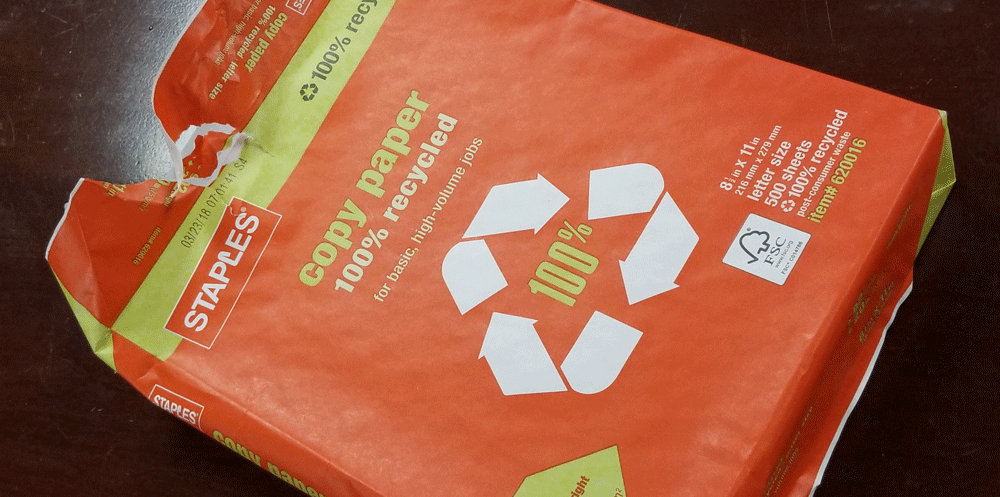How Can LCA Achieve Better Alignment with the Circular Economy?
We’ve been doing a lot of work and thinking about Life Cycle Assessment (LCA) and its relationship to the concept of the circular economy.

We’ve been doing a lot of work and thinking about Life Cycle Assessment (LCA) and its relationship to the concept of the circular economy.
When I heard Tom Szaky, founder of recycling innovator Terracycle, talk about his company’s initiatives to eliminate the concept of waste, I asked him about the use of LCA to analyze what they were doing. He was of the opinion that LCA wasn’t the right tool to assess the circular economy.
Previously, I had asked a longtime practitioner about a situation where the use of a recycled material required far less energy than virgin material. In a case like that, shouldn’t there be added incentive for users to recycle? His response was that if landfilling had fewer impacts than the recycling process, they should just landfill the product.
These are just two examples of how current LCA practice and circular economy principles appear to be at odds with one another. But LCA is the best tool we’ve got for analyzing environmental impacts of recycling systems. So, is the circular economy not as good as we think? Do we need a different tool? Or does LCA need to evolve?
Some colleagues and I have been sharing ideas to see if there might be a better way to look at recycling and reuse. Currently when a typical LCA deals with end-of-life landfill, the analysis is simple: we just add the landfill process, including the required activities of transport and waste burial and any leachate that may occur. But when we deal with reuse or recycling, we consider the benefit of such actions and account for “avoided burden.”
How come we tend to look at the implications of one end-of-life action but not others? What if we change the default perspective to reuse, and see that the effects of landfilling, just like recycling, go beyond the direct activities? Landfill is actually a driver for more virgin product because it removes from circulation material that could have been recycled and put back into the circular stream. We’re working on a method that will flesh that out more fully.
In the meantime, we put on our systems-thinking caps to consider the circular economy more carefully. LCA uses lots of tricks to allow us to consider two product lives in one— either benefitting the first life with a credit, or the second life with not needing to use virgin material. But rarely is there a significant benefit to both lives.
In reality, when a product is recycled, there are actually two products being produced at different times. Our functional unit is no longer “one of product V” (made of virgin material) but “one of product V and one of product R” (made with recycled material). If product V isn’t recycled, product R becomes another product V by default. We can then look at this more complete system to understand which is better.

Figure 1 shows the case where Product V is recycled after being supplied at time 1. Perhaps the ideal case of reuse is my grandmother’s cast iron frying pan, which has already lasted two generations and could endure for five more. For that skillet, the “recycling” process would be a thorough cleaning and the manufacturing process could be skipped.

Figure 2 shows what happens if Product V supplied at time 1 is landfilled instead of being recycled. It is clear that there is both a landfill step and a need to obtain virgin material to create the product to be supplied at time 2.
Requiring both products to be included in a single model eliminates the need to split the impacts between them, and clearly shows the change in system-wide impacts. At the same time, it requires a manufacturer to understand the impacts of its products beyond placement in the recycle bin. Is the product really recycled? What is Product R? is Product R really equivalent to the Product V it replaces?
The goal of circular economy concepts is to help us make the world a better place. Fulfilling that aspiration will require assessment methods that can distinguish good circular economy ideas from bad ones – to answer, for example, the question of whether recycling a particular product in a particular way is actually beneficial.
LCA is a potentially good tool for that, but to date it has been providing mixed messages. By including both the initial product and the product made from recycled material in our functional unit, we can bring the process into better alignment with circular economy thinking, and gain a clearer picture of what’s really happening.
We’re not quite finished with all of this work and thinking. So if you have ideas or a project you want us to work on, please contact us.